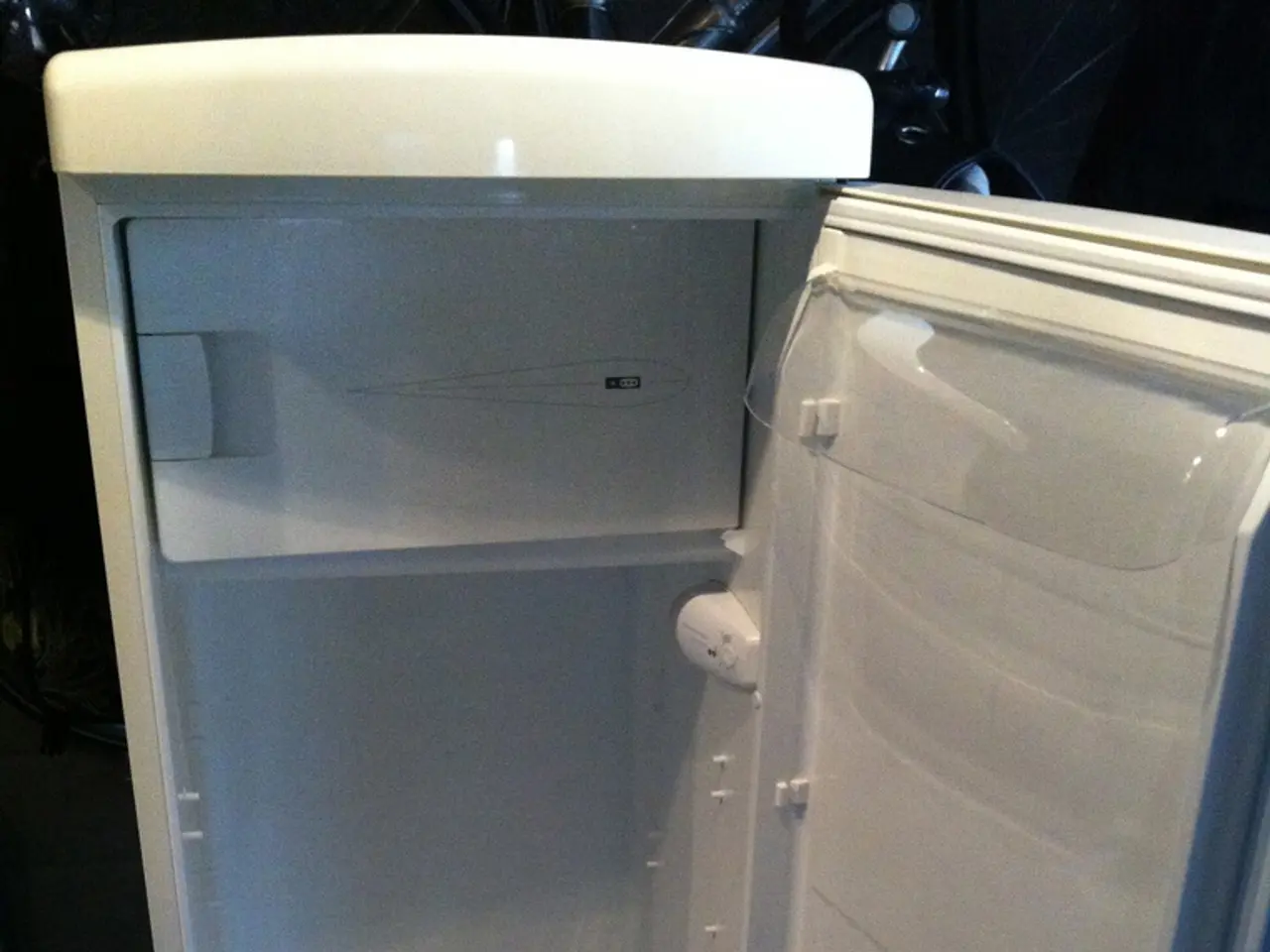Ideal refrigerator temperature and tips for energy-efficient appliance operation.
In the quest to save money on energy bills without compromising on food safety or convenience, maintaining the optimal temperature range for your refrigerator and freezer is essential. Here's a guide to help you achieve just that.
According to energy experts, the recommended temperature range for a refrigerator is between 34°F and 40°F (1°C to 4°C), with 37°F often cited as the ideal target. This temperature range slows bacterial growth significantly without causing chill damage to most fresh produce. For a freezer, it's advisable to keep it at or below 0°F (-18°C) to halt bacterial and mold activity effectively and ensure long-term food safety.
Many modern refrigerators, such as the Fridgemaster Mc55251de, feature a 1 to 5 temperature setting, with higher numbers corresponding to cooler temperatures. Some fridges even have a sliding gauge thermostat, where pushing the slider to the right makes the fridge cooler.
Regular maintenance is key to maximizing energy efficiency in fridges and freezers. Cleaning the coils every 6 months helps the appliance run efficiently, and ensuring a quarter-inch gap for ventilation on the sides, and one inch on the back and top, is also crucial.
Overloading a fridge can prevent proper airflow, making it less efficient at cooling. A loose door seal allows cold air to escape, which can lead to increased energy consumption. To check if your door seal needs replacing, try closing a dollar bill in the door. If it slides out easily, it might be time for a new seal.
By making these changes to the temperature, adding routine maintenance, and ensuring appliances are in the best environment, you can save money on energy bills while maintaining food safety and convenience.
Jason Cook, the owner of SilverBack Home Warranty, a company that specializes in home appliance care and maintenance, emphasizes the importance of regular maintenance. Katie Louise Chee, Eco Manager at the Grant Store, agrees, advising that these settings provide a balance between food safety and energy efficiency.
In addition to these tips, consider investing in energy-efficient appliances. Look for the energy rating label on appliances, and consider models such as the Samsung Fridge Freezer With All Around Cooling & Spacemax Technology or the Bosch French Door Fridge Freezer With Nofrost & Xxl Capacity, which are known for their energy efficiency.
By following these tips, you can ensure your fridge and freezer are running at their most energy-efficient levels, saving you money in the long run without sacrificing food safety or convenience. Happy refrigerating!
- To maintain the optimal temperature range for your refrigerator, aim for a setting between 34°F and 40°F (1°C to 4°C), with 37°F often being the recommended target.
- Regular maintenance, such as cleaning the coils every 6 months and ensuring proper ventilation, is crucial for maximizing energy efficiency in fridges and freezers.
- Overloading a fridge and allowing a loose door seal can lead to increased energy consumption, so make sure to allow for proper airflow and replace any faulty door seals.
- When it comes to energy-efficient appliances, consider models with the energy rating label, such as the Samsung Fridge Freezer With All Around Cooling & Spacemax Technology or the Bosch French Door Fridge Freezer With Nofrost & Xxl Capacity.
- By balancing food safety, energy efficiency, and appliance maintenance, you can build a kitchen lifestyle that saves money on energy bills while still offering convenience, as recommended by home-and-garden and home-improvement experts.




